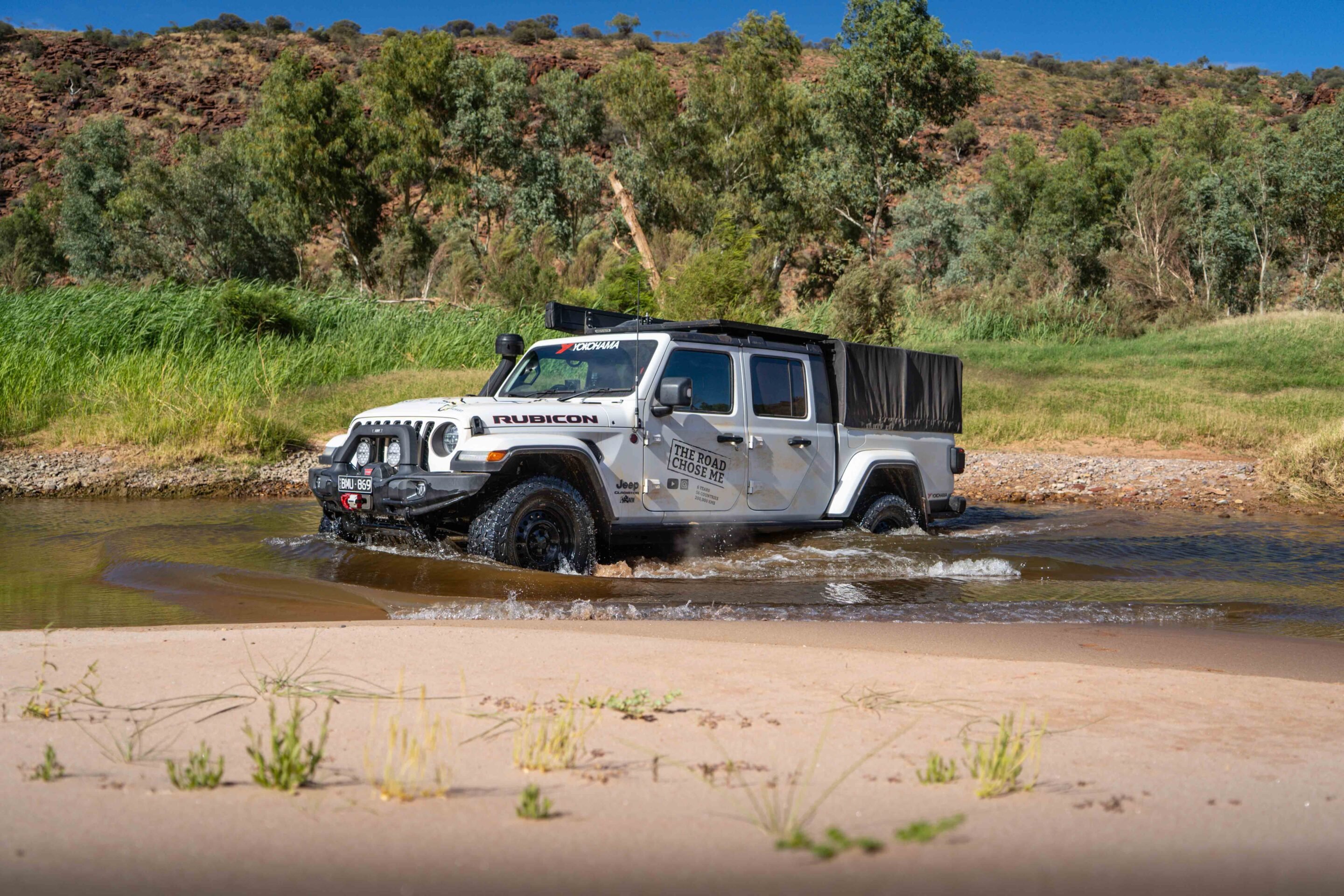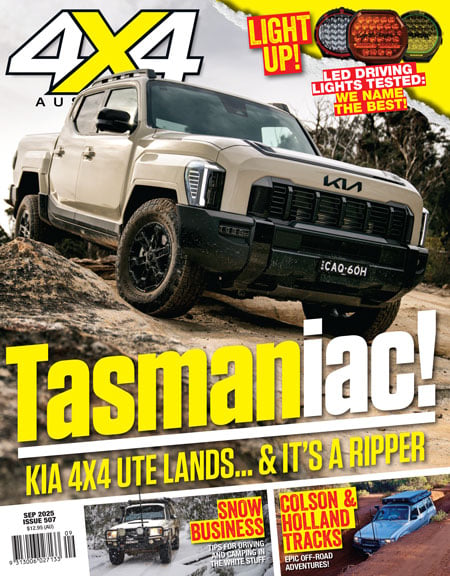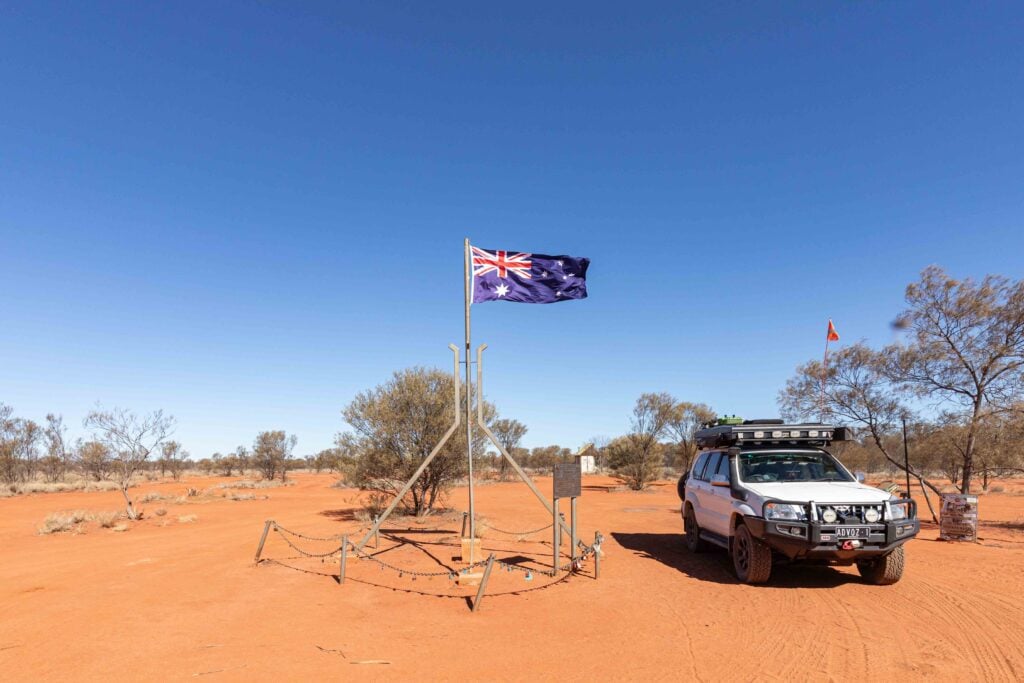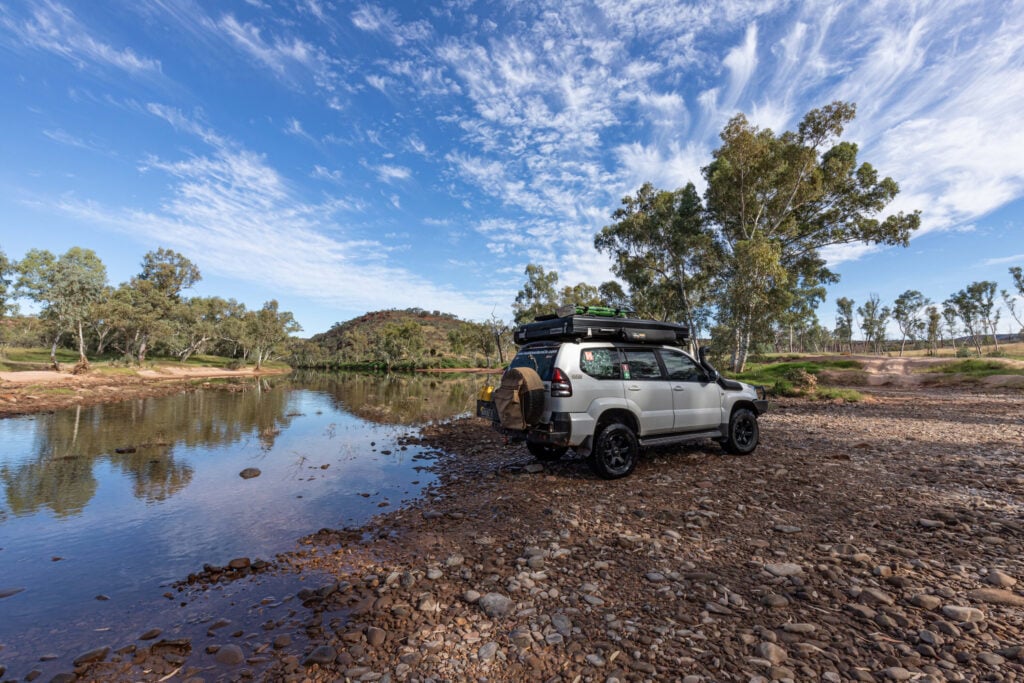Every now and then on my travels, I find myself needing to take a step back – to slow down and really absorb the scene around me. I’ll often catch myself wondering how I ended up here, and whether the moment unfolding in front of me is even real.
Leaning back from the fire, I rewind my memory and take stock of where we are. We’re deep in Finke Gorge, central Australia, camped on the sandy banks of the world’s oldest river. The Jeep’s buried to the axles in soft sand – but that’s tomorrow’s problem. Right now, we’ve got more pressing matters, like roasting a kangaroo tail over the fire. And no, that’s not slang – it’s the actual tail of an actual roo, cooking slowly in the coals. Dingoes yip at the nearly full moon, and now and then their eyes flash in our headlamps. Above us, the Milky Way stretches from one horizon to the other – a blanket of stars so vast it’s almost impossible to take in.
Like all the best adventures, we ended up here entirely by accident – and when we set out, we had no idea what we were getting ourselves into.
Reunion in the Red Centre
It had been nearly a month since we’d waved goodbye to the new mates we made slogging through the muddy Oodnadatta Track in the rain, and we honestly didn’t expect to see them again.
Always on the lookout for a quiet wild camp, Katie and I pulled off the highway south of Alice Springs and found the perfect waterhole just ten minutes in. Straight away, I spotted a familiar old Ford Maverick – and sure enough, up from the murky water came Matt, grinning like always.
Around the campfire we trade stories from the past few weeks and get excited about what’s to come. Matt’s heard good things about nearby Ormiston Gorge, and with the map spread out in the sand, we start piecing together a rough plan. Back in Victoria months earlier, some long-time family friends had rattled off a heap of suggestions for remote places to explore.
I can’t remember all the details, but one thing stands out – a big circle and three bright stars marked in highlighter over the Finke River Gorge. I usually save three stars for the absolute standouts, so whatever they said about the place must’ve made an impression. As the last of the deep red sunset fades and the stars take over the sky, we map out the next week’s adventure.
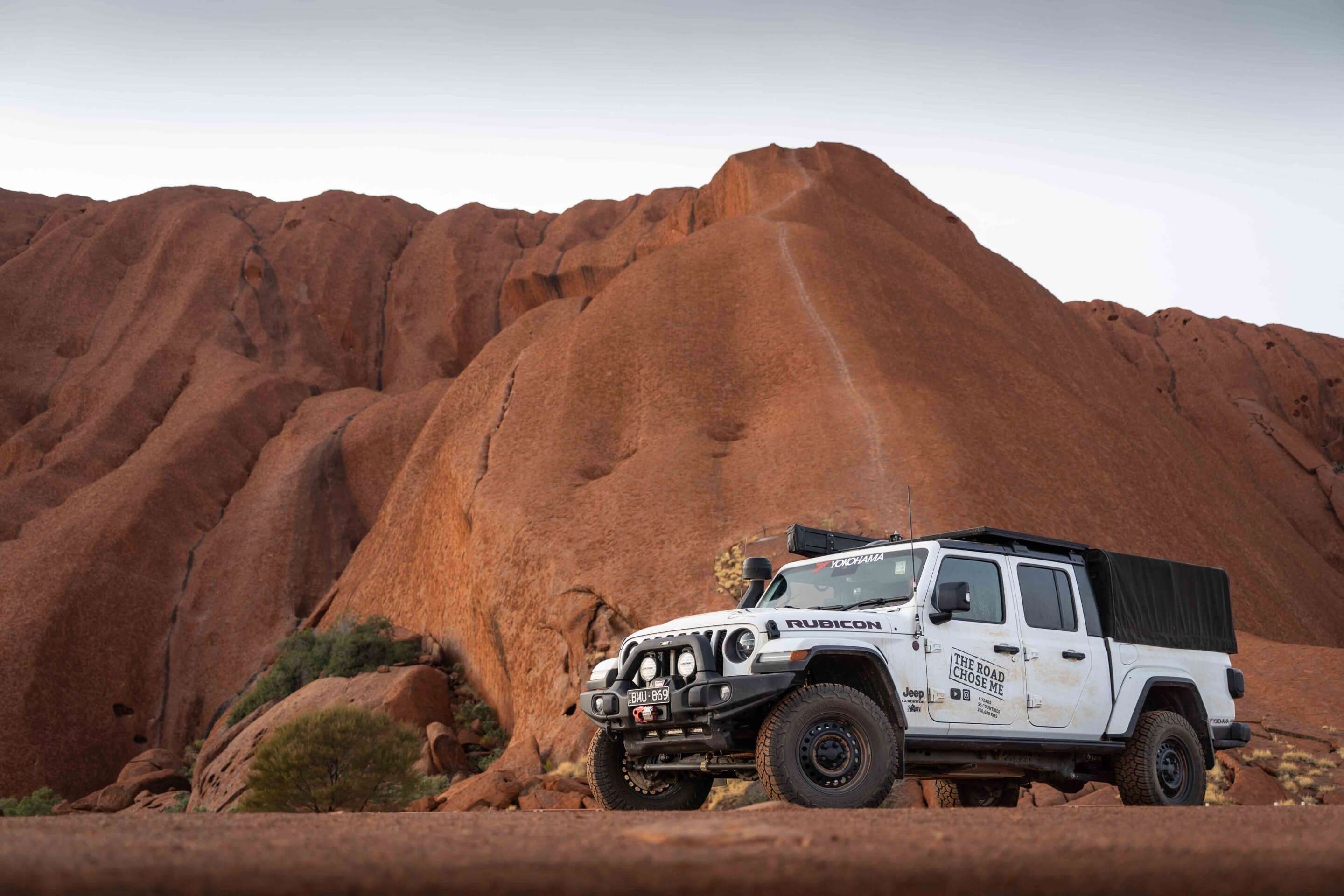
Hiking and swimming at Ormiston Gorge
After a big resupply in Alice Springs – the only decent supermarket for a thousand kays in any direction – we hit the road and head west into the West MacDonnell Ranges. It’s a rugged, red-hued mountain range in the heart of the country, and somehow, I’d never even heard of it before.
Hoping to beat the heat early the next morning we set out for the major hike, at first through scrubland up and around the gorge before we dropped right into it. The highlight comes when the canyon walls close down and we have no choice other than jumping into the surprisingly cold water.
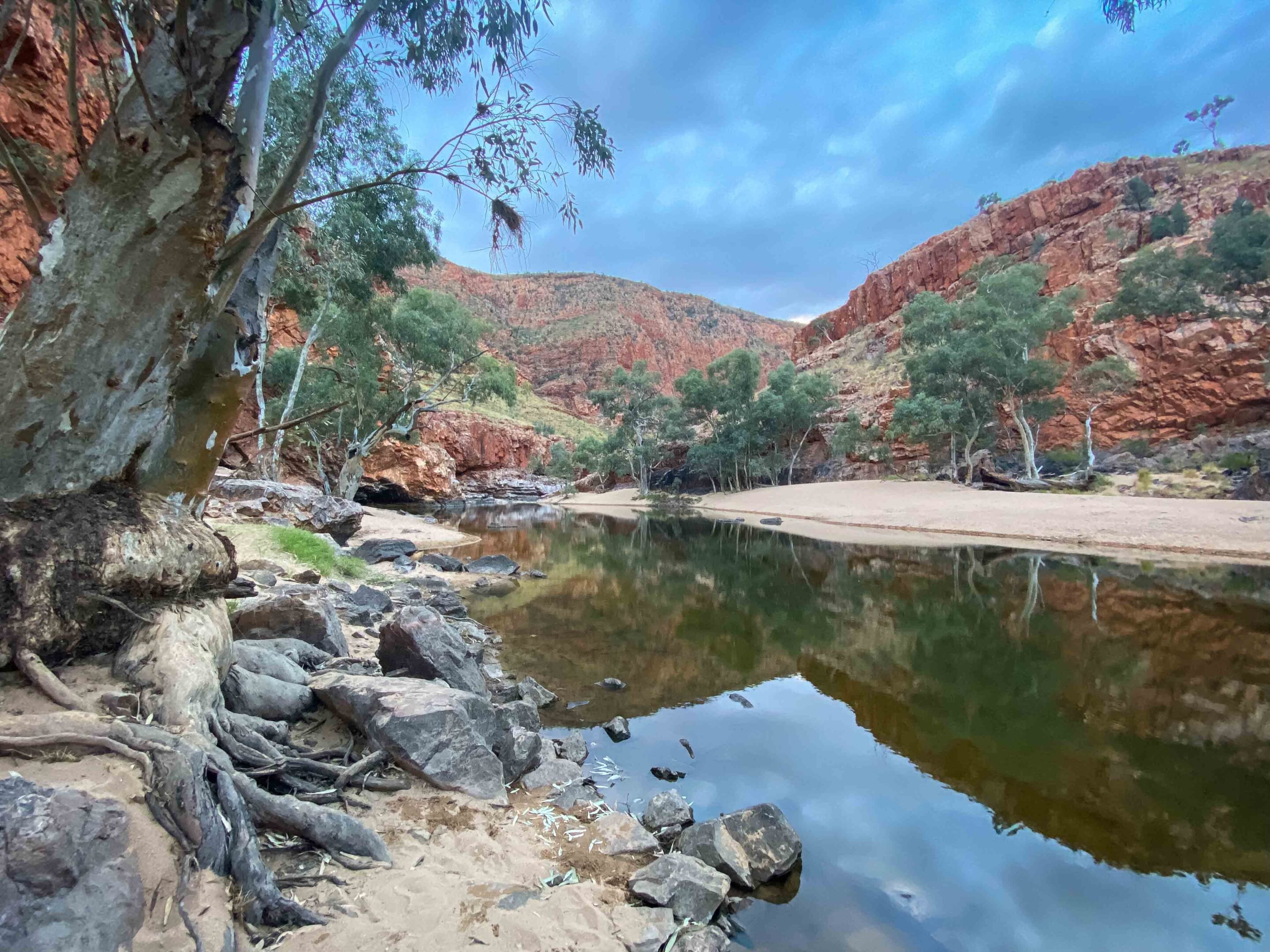
We throw our boots, clothes and keys into garbage bags before pushing off shore and swimming a few hundred metres in the crystal clear water. After the initial shock of the cold water wears off we have a riot of a time swimming, walking and rock hopping down the canyon before we eventually arrive all the way back at camp happily cool and refreshed after many hours of hiking.
Setting out early the next morning, we hoped to beat the heat on our major hike. We began by traversing scrubland, circling up and around the gorge, before finally descending into it. The climax arrived as the canyon walls narrowed, leaving us no option but to plunge into the surprisingly cold water. After stowing our boots, clothes, and keys in garbage bags, we pushed off and swam several hundred meters through the crystal-clear water. Once the initial shock of the cold subsided, we had a fantastic time swimming, walking, and rock-hopping our way down the canyon. Many hours later, we arrived back at camp, happily cool and refreshed.
Exploring Central Australia’s Palm Valley
Just over an hour down the road, we turn off the highway toward Palm Valley, with Matt making a quick stop at the general store in the small Aboriginal community of Ntaria.
He’s on a mission to pick up a kangaroo tail – and sure enough, the shop sells them, neatly wrapped in plastic for just a few bucks. It sounds like a joke, but I promise it’s not. It’s almost impossible not to make lightsaber noises while swinging the frozen tail around, so I quickly stash it in the fridge before things get out of hand.
Not far from Ntaria, we tackle a few rocky steps and dry, sandy stretches of riverbed before rolling into the surreal landscape of Palm Valley. This is the only place in Central Australia where the towering Red Cabbage Palms still grow, giving the valley a lush, almost otherworldly feel. No one knows for sure how they got here, but it’s widely believed they’re remnants from a prehistoric era when a tropical rainforest covered what’s now the dry heart of the continent.
In a strangely disorienting way, the palms look exactly like something you’d expect to find on a deserted tropical island – despite being more than 2000km from the nearest ocean. They’re absolutely stunning, and we spend a few hours wandering through the gorge, discovering hidden waterholes and palms of all shapes and sizes tucked into the rocky landscape.
Navigating the Ancient Finke Gorge
Soon enough, we reach the gorge itself and drop tyre pressures to 20psi, expecting soft sand and rocky scrambles ahead.
With the worst of the heat behind us, we spend the next few hours carefully picking our way through the canyon, criss-crossing what little water remains in the river and skirting around the deeper pools. At times, the sheer rock walls close in tight, glowing a brilliant red in the late afternoon sun. At others, they fall away to reveal sweeping views down the spine of this ancient river valley.
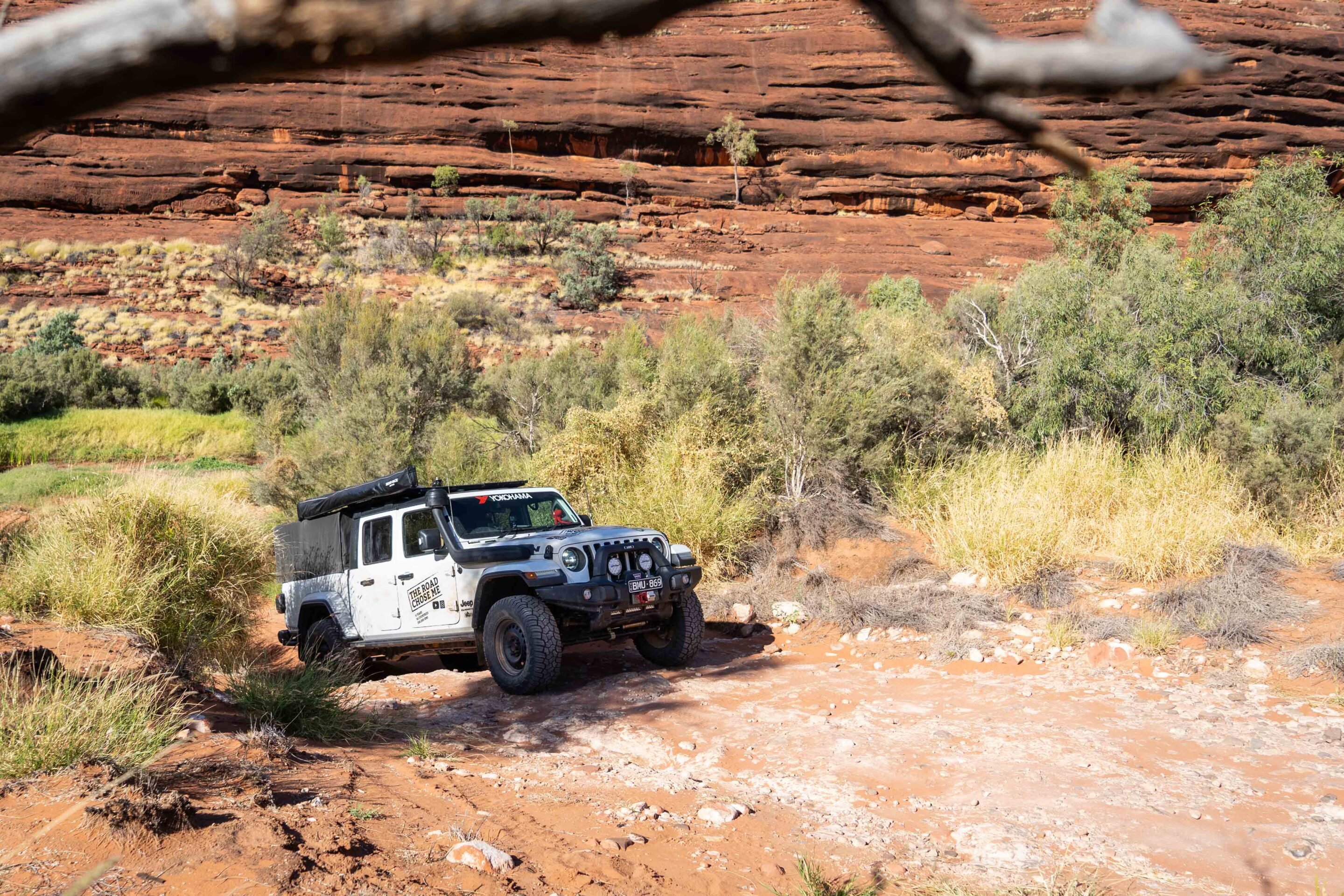
Known as Larapinta by the local Aboriginal people, the Finke River is believed to be one of the oldest rivers on Earth. While its exact age is hard to pin down, sections of the riverbed are more than 340 million years old – and it’s been following roughly the same course for the past 100 million years.
The Finke River runs through the traditional lands of the Arrernte people, who believe it was formed by the Rainbow Serpent as it shot out from Lake Eyre, carving the river’s path as it travelled. The Rainbow Serpent is a powerful ancestral being in many Aboriginal creation stories – a giver of life, a guardian of water, and a central figure in the spiritual landscape of this country.
We don’t spot any snakes in the canyon, but as we wind our way through each bend in the ancient riverbed, I can’t help but think about a large snake slithering from side to side as we navigate each bend.
Central Australian highlights
Despite growing up in Australia, I’d never explored the Red Centre – a region packed with some of the country’s most iconic natural landmarks. Over a few unforgettable weeks, we took in sights like Kings Canyon, Uluru and Kata Tjuṯa – formerly known as Ayers Rock and The Olgas. These towering red rock formations began forming around 550 million years ago on the floor of a vast inland sea. Over time, sediment built up and hardened, then slowly eroded away to reveal the massive sandstone and conglomerate outcrops we see today.
Although Uluru and Kata Tjuṯa were first recorded by Europeans in 1872 and later developed for tourism, they were finally handed back to the traditional owners – the Pitjantjatjara people – in 1985, following a long legal battle over native title. That fight for land rights and recognition continues to this day.
Camping under the stars in the Outback
I happily jump between vehicles, finally getting to watch the Jeep in action as Katie tackles rock scrambles, river crossings and deep sand on her own.
After hours of exploring, the sun begins to dip as Matt pulls up on a perfect stretch of soft sand beside a wide waterhole, backed by a towering red rock wall glowing in the fading light. Back behind the wheel, I ease the Jeep into the soft sand and instantly know it’s going to sink if I don’t stay on the throttle. But I want to park near Matt, so I let it happen – and have a good laugh when all I get is wheelspin, both forward and back. It’s more or less level and exactly where I want to set up camp, so there’s no rush to dig it out.
Soon we’ve got a bed of hot coals going and dinner underway – a stew bubbling away in the Dutch oven, and the kangaroo tail laid carefully on the coals. It’s still covered in fur, but I vaguely recall that it’ll burn off once the meat is cooked. We turn the tail regularly, aiming for an even cook without charring it, all the while keeping an ear on the yipping dingoes echoing through the gorge. Their calls bounce off the rock walls, making it feel like we’re surrounded by dozens of them – though in reality, there are probably only a few curious dingoes keeping their distance.
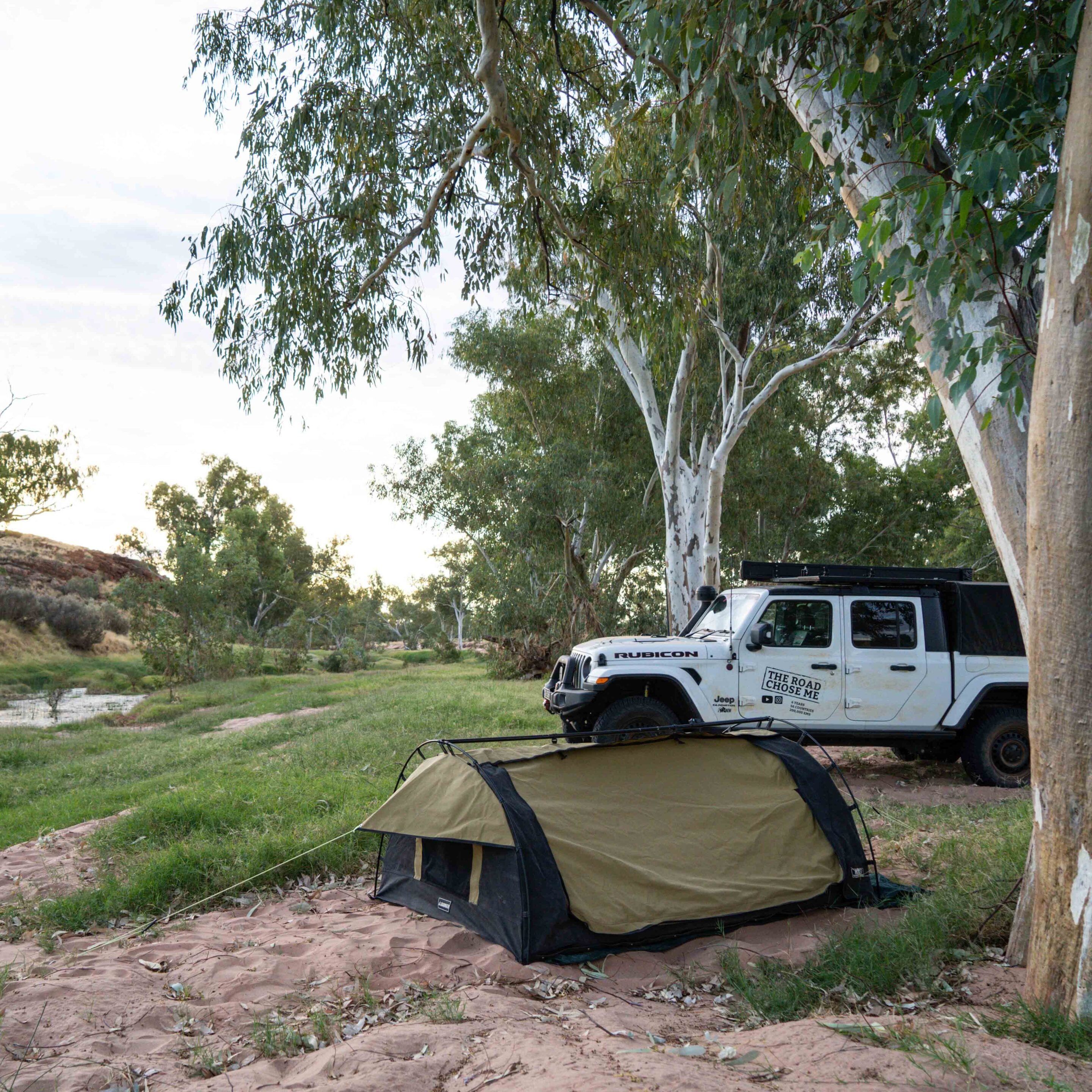
With no real experience to go on, we just guess when the tail is done and start carefully peeling off the charred skin and burnt fur, picking chunks of meat from the bone. I’ll admit, we got a bit too much sand on it and clearly aren’t experts – but to my surprise, it’s much fattier and tastier than I expected. After a few bites, it hits me: it tastes just like the fattier ends of a good roast lamb – one of my all-time favourite meals, thanks to my Aussie roots. We all agree it’s a win, and by the end there’s not a scrap left for the dingoes.
The next morning, Matt tries his luck with the fishing rod and can’t wipe the grin off his face as he lands five little fish in as many casts. They’re too small to eat, but they provide plenty of entertainment in the soft morning light. It doesn’t take much to get the Jeep unstuck, and soon we’re back into the rhythm – zig-zagging our way down the gorge, crossing waterholes, clambering over rocks and ploughing through soft sand.
Late in the day, we stumble across another stunning spot to call home for the night. Once again, we spend hours around the campfire swapping stories of past adventures and epic landscapes, with the now-familiar sound of dingoes yipping up and down the canyon providing the perfect outback soundtrack.
Unplanned adventures in the heart of Australia
Months earlier, when friends had circled the Finke River Gorge on our map, I had no idea what to expect.
I couldn’t picture what it might look like or what we’d find there – and, truthfully, I didn’t think we’d bother. It’s not a well-known destination, and no one else had ever suggested we check it out. But a chance reunion with Matt and our shared appetite for adventure shifted our plans – and I’m incredibly glad it did.
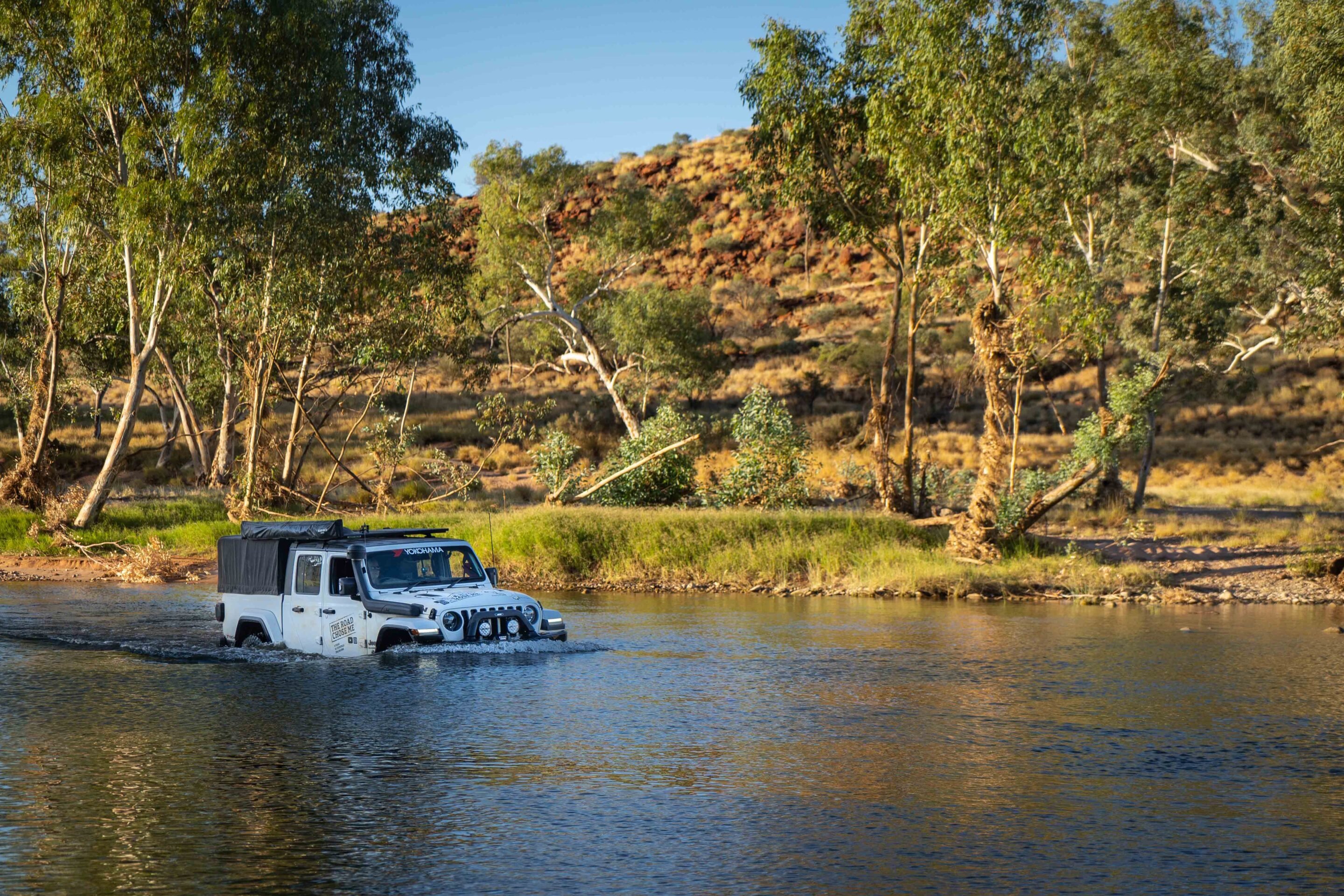
We never crossed paths with Matt again as we continued our lap around Australia, but we kept in touch online. He stuck around in Central Australia for a while, even landing a job on a cattle station – the kind that needs a helicopter to get around. And it’s not just cattle out there, either. The place is crawling with creatures… many of them with big teeth and plenty of scales.
Not long ago, I spotted a post from Matt on social media – grinning from ear to ear while playing with a six-foot tiger snake. One of the deadliest snakes in the country, and he looked like he was having the time of his life. Safe to say, he’s doing just fine.
As Katie and I continue our journey around Australia, we remain in awe of this incredible continent – its raw beauty, wild places and the people we meet along the way. We’ve made a pact to keep saying yes to whatever adventure comes our way.
If you ever get the chance, say yes to the Finke – it’s one hell of an adventure.
Desert Air
With vast distances and jaw-dropping scenery, one of the best ways to take in the desert is from above – so we set the alarm for 4am and head out for a hot air balloon flight just south of Alice Springs. As the balloon strains against its tether, we scramble into the basket, and seconds later the burner erupts with a deafening roar, blasting hot air skyward. The balloon lifts off far quicker than expected, dragging the heavy basket into the cool morning air.
Once we’re airborne, the burner cuts out and silence takes over, broken only by the occasional burst of flame as we drift on gentle thermals. The pilot explains he can’t exactly steer – but he can “make suggestions.” After a smooth touchdown, there’s a bit of a wait while the ground crew tracks us down, followed by some hands-on balloon folding and the traditional champagne toast to cap off the flight.
We recommend
-
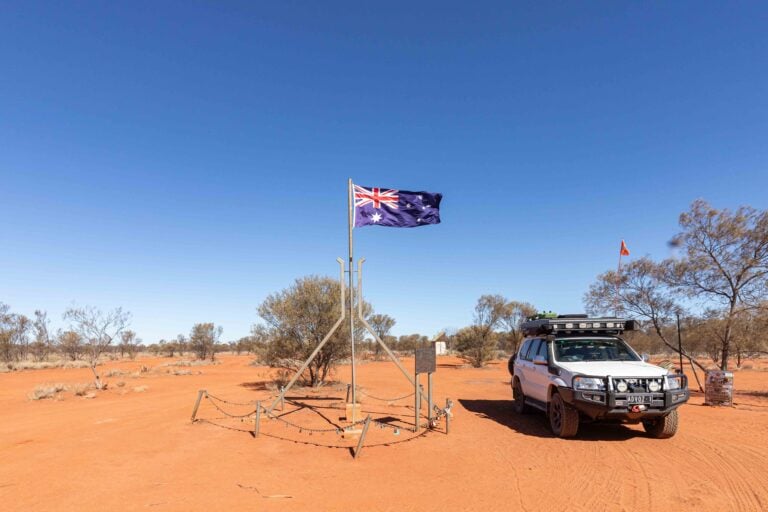 Explore NT
Explore NTThe Red Centre: 4x4 journey to the centre of Australia
The Red Centre presents countless adventures for 4WD tourers
-
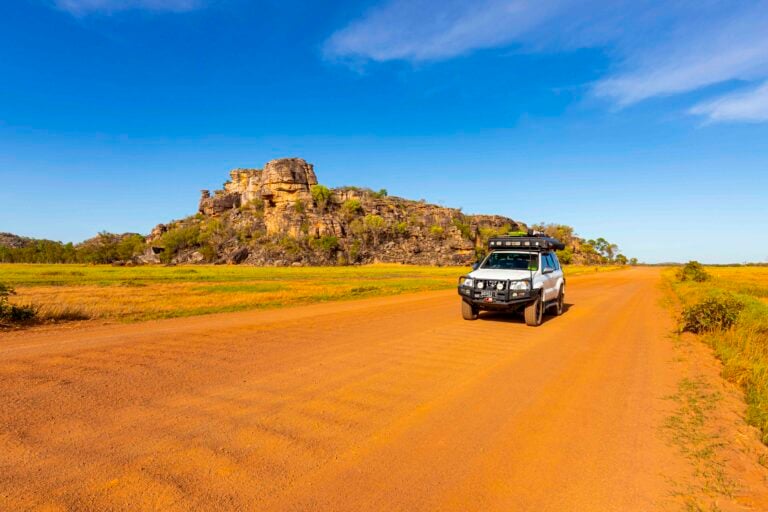 Explore NT
Explore NTVisiting Garig Gunak Barlu National Park (Cobourg Peninsula) – Everything you need to know
Perched at the northernmost tip of the NT mainland, this park rewards intrepid travellers with untouched beaches and dramatic landscapes
-
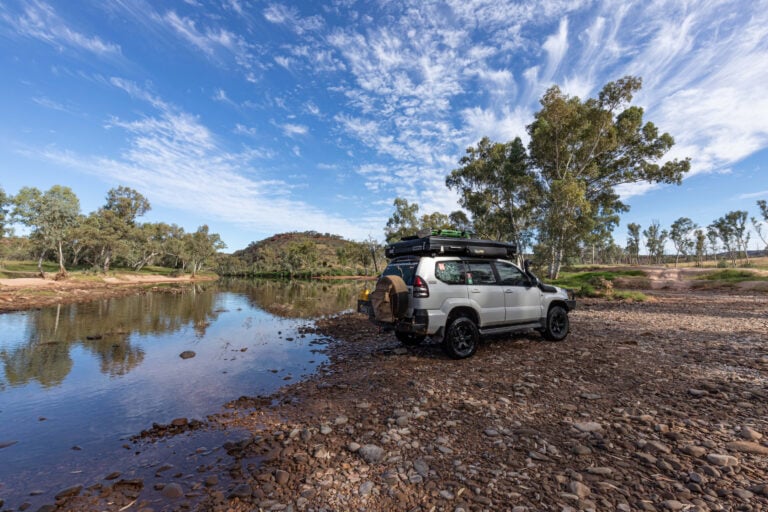 Explore NT
Explore NTTackling the Finke River 4WD route
This route offers an exciting journey through the Finke Gorge National Park, showcasing stunning desert landscapes

